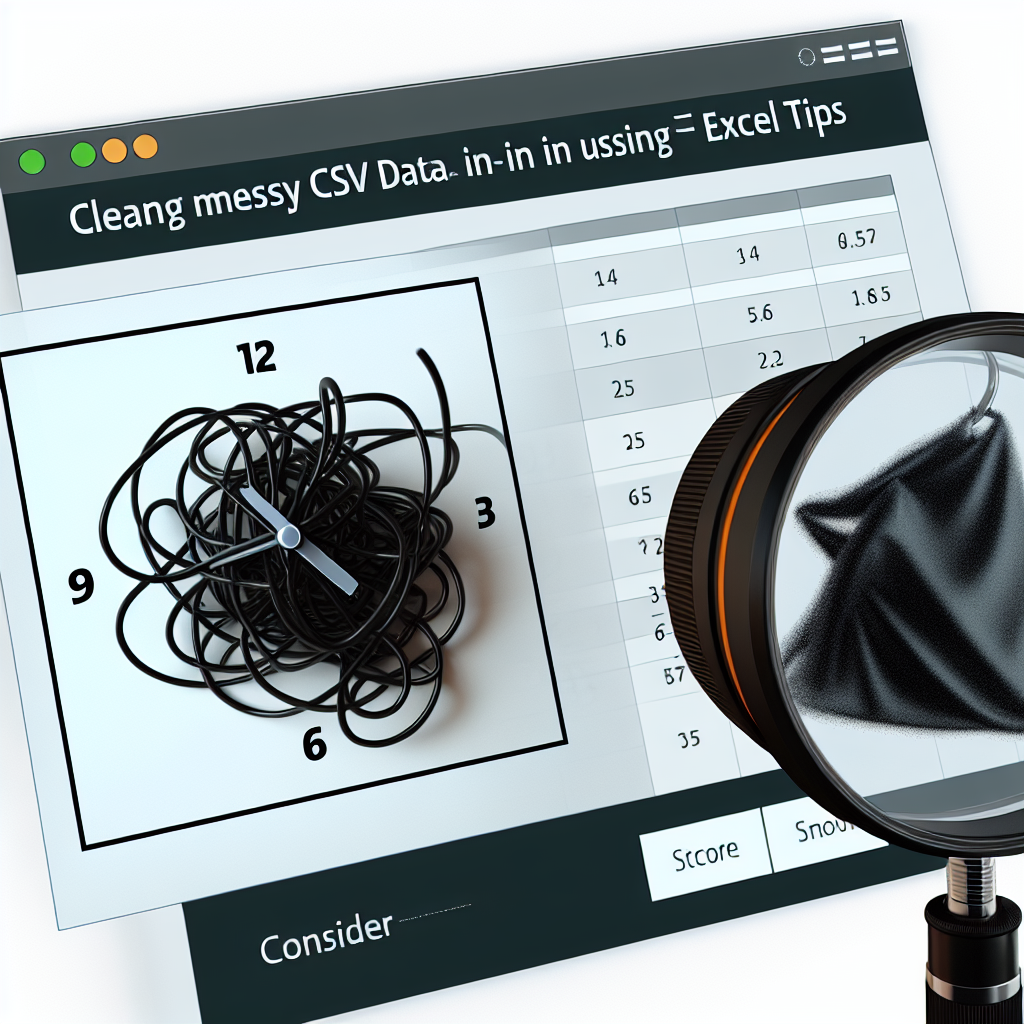Dealing with messy CSV data can be a daunting task, especially when you’re pressed for time. Fortunately, with a few simple Excel tips and Tricks, you can format and clean your data in just 15 seconds! This guide will walk you through efficient methods to streamline your data cleaning process, saving you time and effort.
Transforming Messy CSV Data Using Text Functions and Features
When faced with cluttered or irregular CSV files, the key to quick formatting lies in mastering Excel’s core text functions and data tools. Begin by importing your CSV into Excel and examine the data structure. Many messy datasets suffer from inconsistent delimiters, extra spaces, or mixed data types.
Use the Text to Columns feature to efficiently split combined data into separate columns. Select your column, navigate to Data > Text to Columns, choose a delimiter (such as commas, tabs, or semicolons), and convert the data seamlessly. For irregular delimiters or complex parsing tasks, formulas like TRIM, SUBSTITUTE, and TEXTSPLIT (available in newer Excel versions) are invaluable.
- Removing extra spaces: =TRIM(A1)
- Replacing inconsistent delimiters: =SUBSTITUTE(A1, “;”, “,”)
- Splitting data into columns: =TEXTSPLIT(A1, “,”)
Additionally, leveraging Excel’s Flash Fill feature can automatically recognize patterns and fill in necessary data transformations, dramatically speeding up the cleanup process.
Automating Data Cleanup with Power Query
For more complex or recurring CSV file issues, Power Query is your best ally. Accessible via Data > Get & Transform Data > From Text/CSV, Power Query enables you to load messy data, apply transformations, and clean it until it’s perfectly structured—all without manual editing.
Within Power Query, you can perform a variety of operations, such as:
- Filtering out irrelevant rows or columns
- Replacing or splitting values based on custom delimiters
- Changing data types for consistency
- Removing duplicates and handling errors
Once your data appears cleaned and structured, simply load it back into Excel. This process is repeatable, making future data imports even faster. Power Query’s intuitive interface allows you to automate the cleanup process, saving you significant amounts of time and effort with each dataset.
In conclusion, mastering Excel’s core tools—like Text to Columns, formulas, and Power Query—can transform even the messiest CSV data into a clean, usable format in just 15 seconds. By applying these techniques, you’ll streamline your workflow, enhance data accuracy, and become more efficient. Embrace these tips to handle messy datasets confidently and save valuable time daily.
